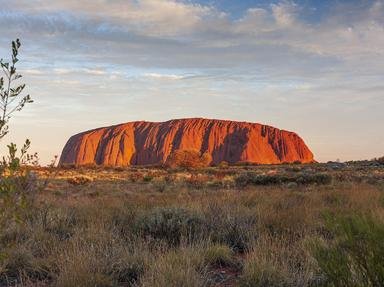Quiz Answer Key and Fun Facts
1. "I love a sunburnt country"
How much of the Australian land mass is in the tropics, that is north of the Tropic of Capricorn?
2. "Core of my heart, my country! / Her pitiless blue sky, / When sick at heart, around us, / We see the cattle die.
Is Australia the driest inhabited continent?
3. "... A land of sweeping plains ..."
Where is Australia ranked as a continent from flattest to most mountainous?
4. "...Of ragged mountain ranges..."
True to its multi-cultural roots, Australia's tallest mountain is Mt Kosciuszko, named after General Tadeusz Kosciuszko. Which country was this national hero from?
5. "...Of droughts and flooding rains."
Which one of these major cities is situated on a flood plain?
6. "...I love her jewelled sea..."
Australia is a continent, a country and an island so we have lots of water around us. Which body of water is NOT a sea with a shoreline on Australia?
7. "I love a sunburnt country" is actually the first line of the second stanza of the poem "My Country". The first starts of with: "The love of field and coppice, / Of green and shaded lanes. / Of ordered woods and gardens."
Where in the world is the poet is referring to?
8. OK, back to "sunburnt country"
Australia has a thriving industry in sun protection. What sun protection item was invented by an Australian ?
9. The middle of Australia is known as The Red Centre. True or False: it is named The Red Centre as it is SO hot!
10. While over 70% of Australia is considered arid or semi arid, "only" 18% is actually considered desert. Of Australia's ten deserts, which one is the largest?
Source: Author
1nn1
This quiz was reviewed by FunTrivia editor
agony before going online.
Any errors found in FunTrivia content are routinely corrected through our feedback system.
